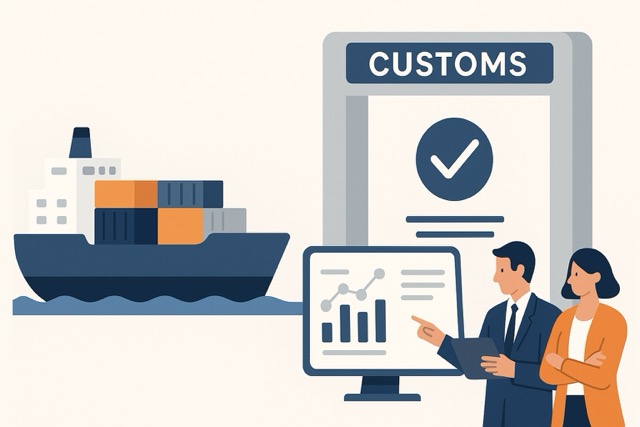If you’re working in global trade or logistics, you’re already feeling the pressure to move goods faster, cheaper, and with more visibility than ever before. Smart ports and smart borders are giving you the tools to do just that. These aren’t experimental pilots anymore—they’re active components in major hubs around the world. Technologies like AI, blockchain, digital twins, and automated inspection systems are reshaping how cargo flows, how customs processes function, and how supply chains maintain integrity across international checkpoints. In this article, you’ll explore how smart technologies are changing the face of global trade, and how you can take advantage of them to reduce costs, increase throughput, and stay ahead of regulatory demands.
Smart Port Operations That Actually Deliver
Smart ports are no longer futuristic—they’re already optimizing cargo movement in places like Rotterdam, Singapore, and Los Angeles. By integrating Internet of Things (IoT) devices, machine learning models, and predictive analytics, port authorities are reducing dwell times and speeding up container turnover. You’ve got access to real-time vessel tracking, predictive arrival windows, and optimized berth allocation based on demand forecasts, weather data, and even fuel consumption.
If you’re managing shipping logistics, this means you can plan labor, trucking, and container allocation with more precision. The result? Less idle time for ships, smoother truck flows through terminals, and lower demurrage charges. It’s not just better visibility—it’s actionable intelligence that helps you avoid surprises and streamline handoffs.
Automation and Robotics on the Docks
One of the most visible changes at smart ports is the adoption of robotics and automated systems. Autonomous cranes load and unload ships with exact timing. Driverless vehicles move containers between terminals. In ports like Qingdao and Hamburg, these technologies have already replaced much of the manual handling process, cutting turnaround times by hours—sometimes days.
You don’t just save on labor. You reduce error rates, improve safety, and ensure consistency across shifts. These systems work 24/7 without downtime. If you’re responsible for throughput efficiency or cost reduction, automation isn’t just a capital expense—it’s a long-term performance asset.
Digital Twins Are Changing How You Plan
Imagine running a port or warehouse operation not by spreadsheets, but by simulating every scenario in a virtual replica. That’s what digital twin technology gives you. It builds a digital mirror of your entire physical operation—cranes, yards, gates, weather systems, even staff movement.
If there’s a delay, the digital twin can show you where backups will hit next and what your recovery options are. You can simulate new layouts, re-sequence loading schedules, and test out maintenance timing without disrupting real operations. This lets you plan not just for efficiency, but for resilience. The Port of Singapore already uses digital twins to evaluate and enhance its operations in real time—and it’s saved millions by avoiding service interruptions.
Blockchain Is Fixing the Paper Trail
Trade paperwork has always been a bottleneck. Bills of lading, customs documents, insurance forms—all prone to delay, error, or fraud. Blockchain technology replaces those stacks of documents with secure, transparent digital records. You get tamper-proof audit trails, real-time document validation, and automatic execution of smart contracts.
Platforms like TradeLens are already used by major shippers and port authorities. If you’re managing cross-border logistics or compliance, integrating blockchain-based documentation streamlines everything from customs clearance to payment release. It cuts down administrative overhead, lowers risk, and speeds up international trade.
Smart Borders Keep Cargo Moving and Secure
Once containers leave the port, they often hit a second barrier: customs clearance. That’s where smart border technology steps in. AI-powered scanners, biometric gates, and real-time risk analysis systems are allowing faster, more secure border crossings. The European Union’s Smart Borders program uses facial recognition and fingerprint scanning to clear trusted travelers and shipments, while still flagging high-risk entries for deeper inspection.
You get faster clearance times without compromising compliance. For large-volume traders or just-in-time manufacturers, smart borders reduce the uncertainty that has historically plagued cross-border operations. You can forecast delivery times more accurately and avoid costly delays.
AI in Customs and Trade Compliance
Artificial intelligence is not just scanning cargo images. It’s analyzing trade documents, identifying inconsistencies, and flagging potential violations before goods ever reach customs. In the U.S., for instance, Customs and Border Protection has adopted machine learning algorithms to assess manifests and predict which shipments need inspection.
If you’re exporting or importing in regulated sectors—electronics, pharmaceuticals, agriculture—you can use similar AI tools on your side to pre-audit documentation and avoid violations. That means smoother trade lanes, fewer penalties, and a reputation as a trusted partner in compliance-driven supply chains.
Sustainability Is Built Into Smart Infrastructure
It’s not just about efficiency. Smart ports and borders are becoming greener too. Ports are installing electric cranes, hybrid tugboats, and shore power stations that let ships turn off engines while docked. Environmental sensors track air quality, noise levels, and energy consumption to ensure compliance with environmental regulations.
At the Port of Los Angeles, these upgrades have already cut nitrogen oxide emissions by over 60%. If your company has carbon reduction goals or needs to comply with ESG standards, partnering with smart logistics hubs gives you a measurable advantage.
How Smart Tech Is Transforming Global Trade
- Real-time tracking and automated loading in smart ports
- Blockchain-based customs documentation
- Digital twins for scenario simulation and planning
- AI-driven risk assessment in customs
- Greener infrastructure and sustainable logistics
In Conclusion
Technology isn’t just optimizing trade—it’s reinventing it. Smart ports and borders are giving you tools to handle more cargo with fewer delays, greater accuracy, and better compliance. You’re not just getting faster processes; you’re getting smarter systems that learn and adapt with every shipment. Whether you’re overseeing supply chain operations, managing customs clearance, or selecting trade partners, the message is clear: adopting these technologies isn’t optional anymore. It’s how you stay competitive in a world where speed, trust, and data-driven performance define success.
For more content on logistics, technology, and trade, please visit my Medium profile.

